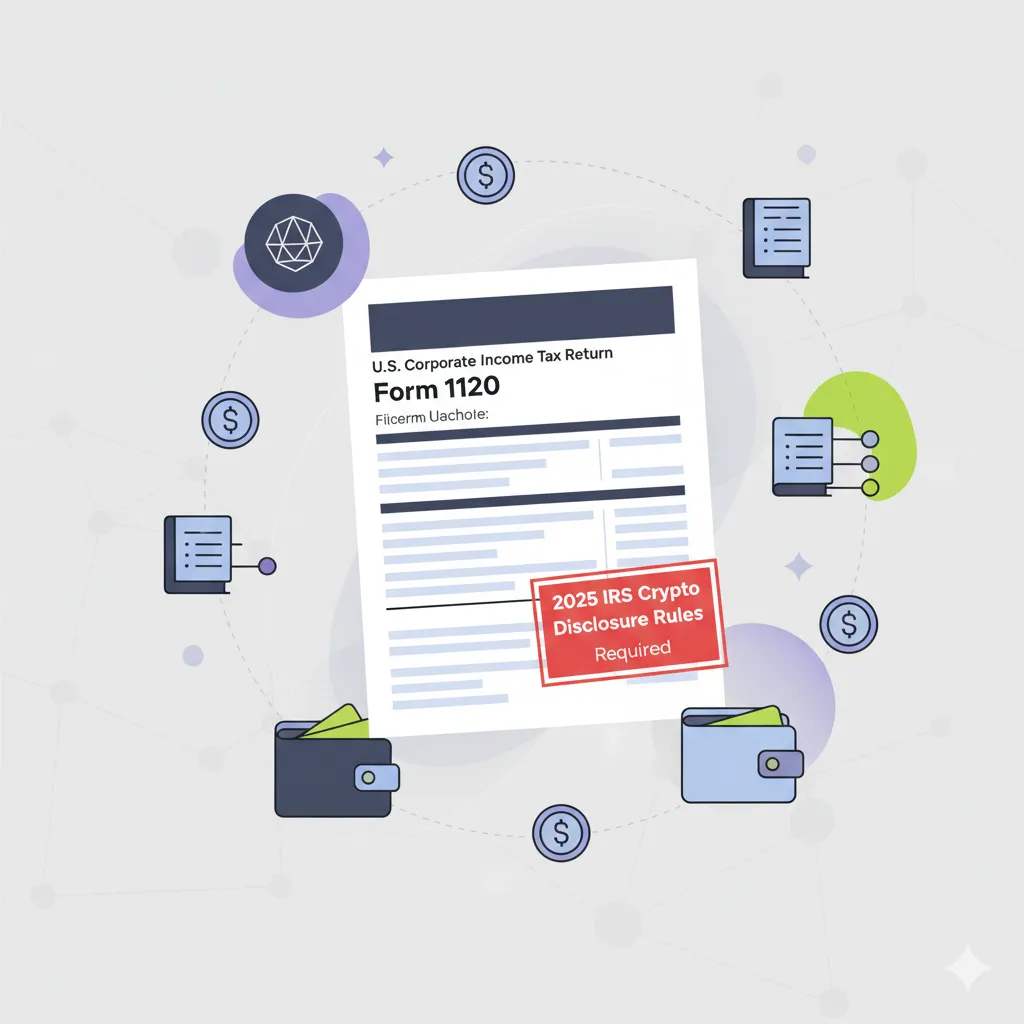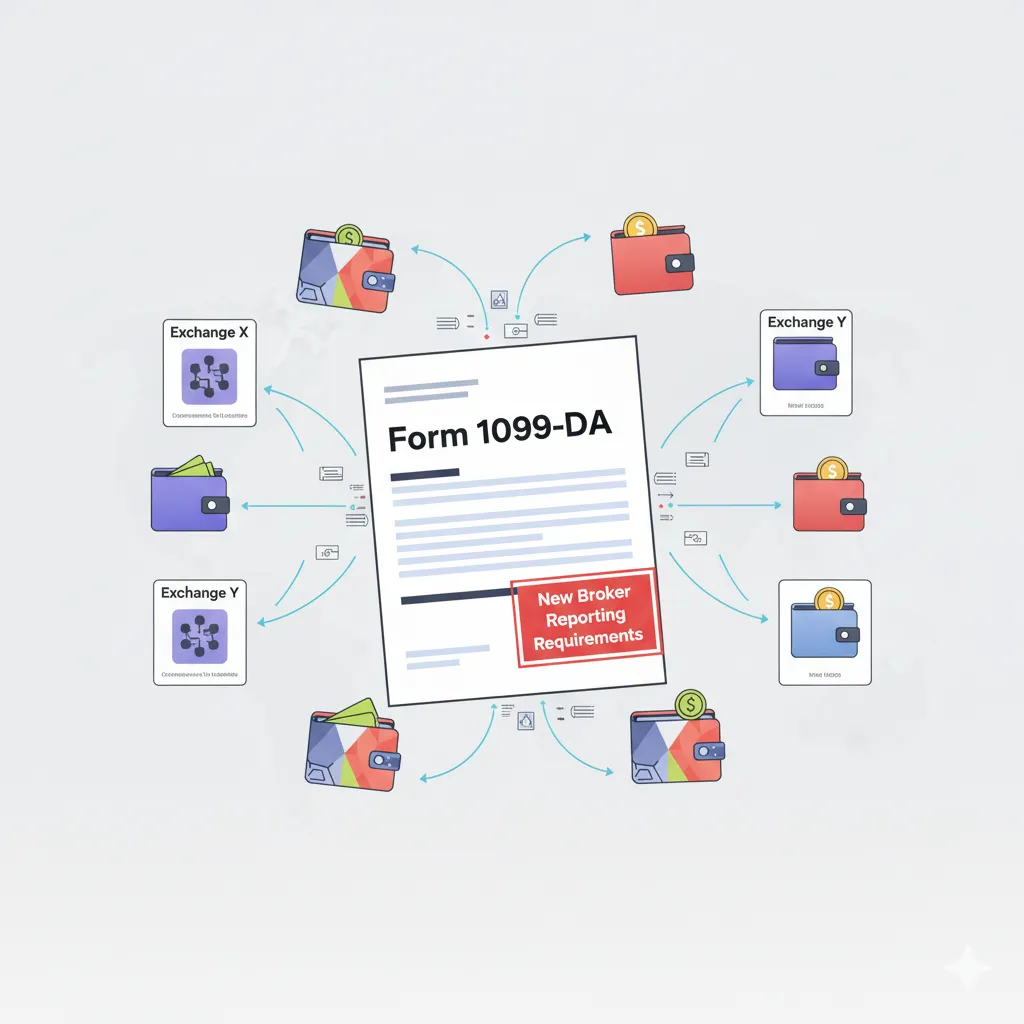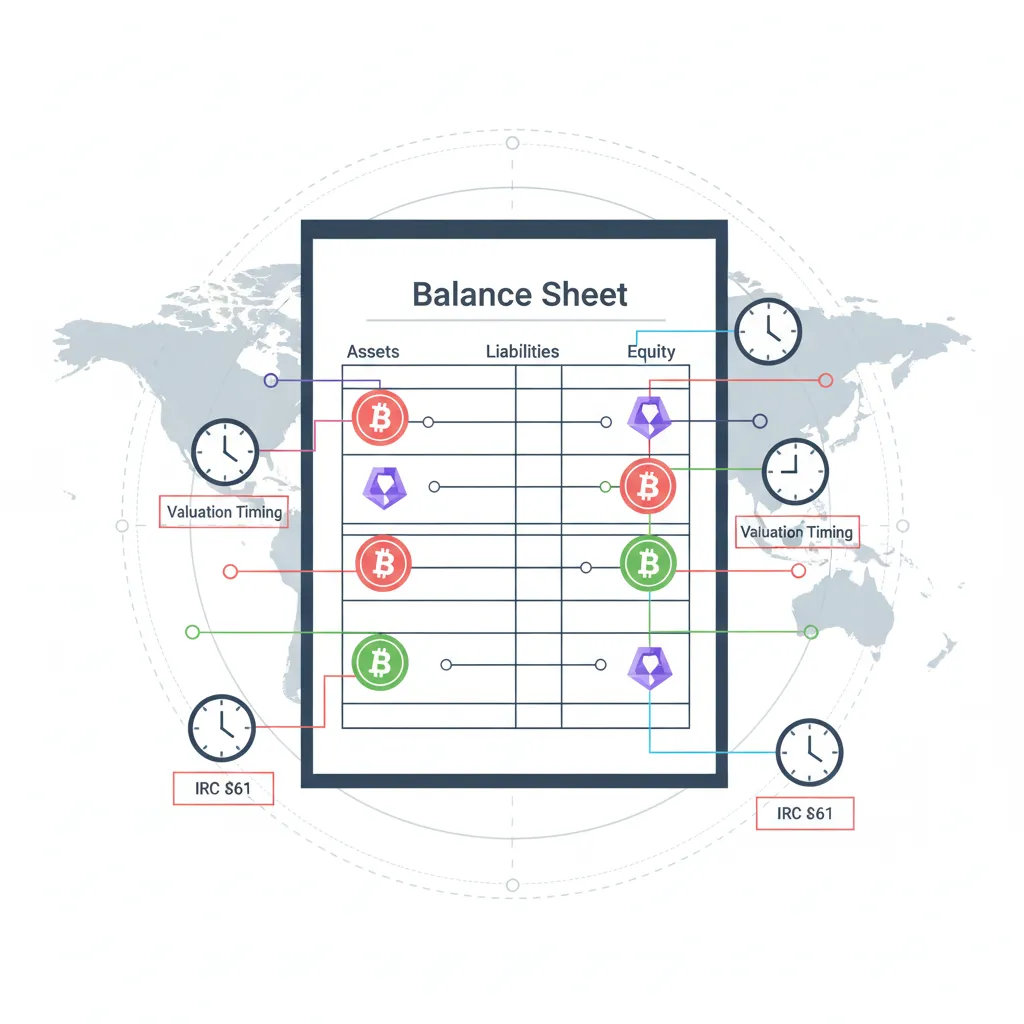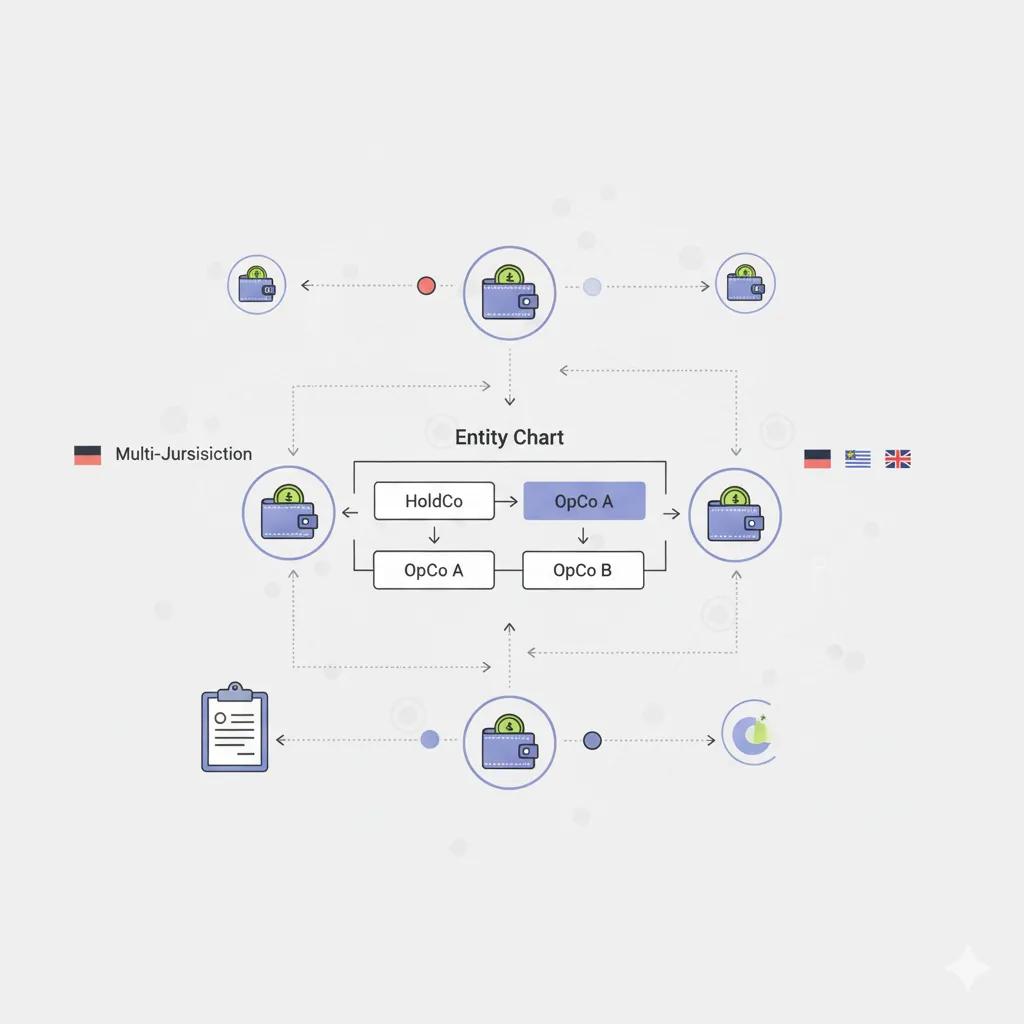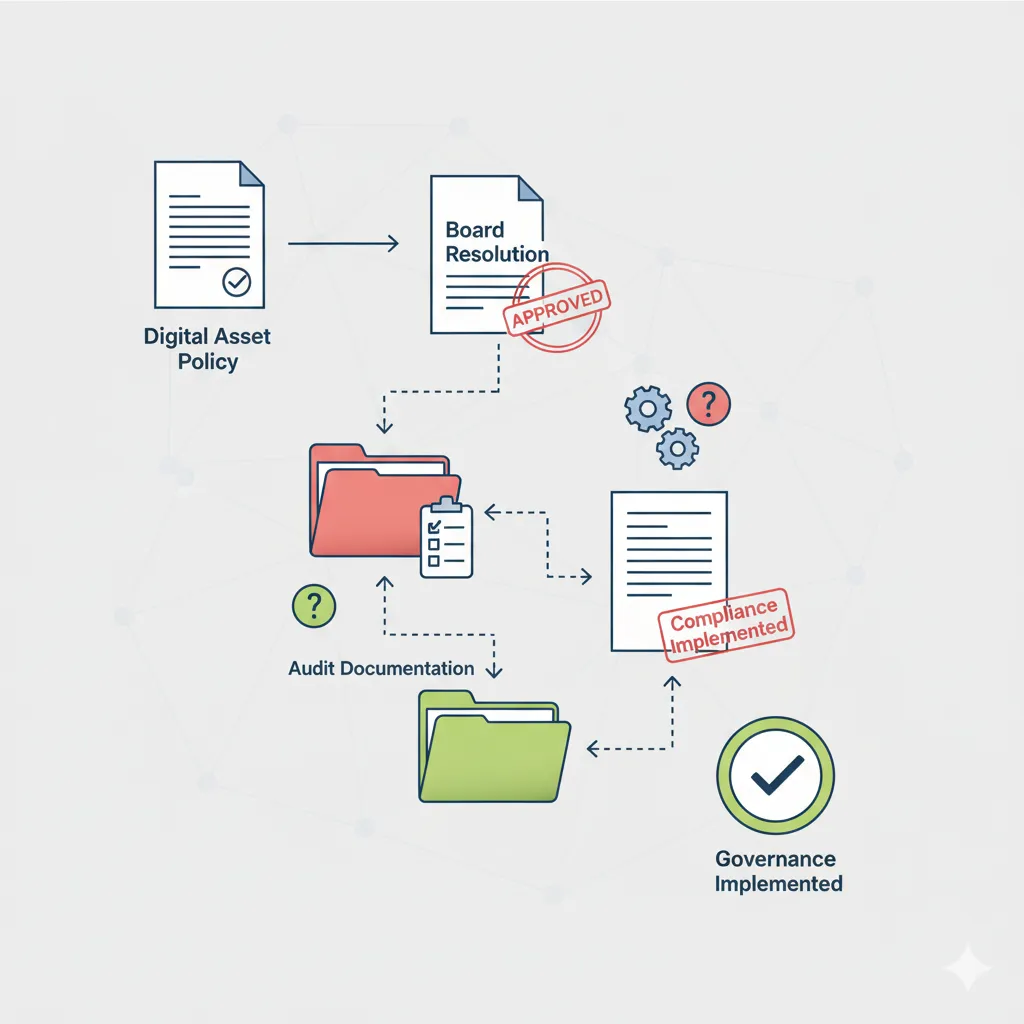Strategic Approaches to Crypto Asset Valuation and Income Recognition in the Modern Regulatory Environment
The advent of sophisticated crypto-native business models has created unprecedented challenges in asset valuation and income recognition timing. From pre-launch token grants to complex DeFi yield farming strategies, crypto businesses must navigate intricate intersections of tax law, accounting principles, and regulatory requirements while maintaining operational flexibility and business objectives.
The Valuation Challenge in Crypto-Native Business Models
Cryptocurrency markets exhibit extreme volatility that creates significant valuation challenges. Major cryptocurrencies can experience 10-20% price movements in single trading sessions, smaller tokens may have limited trading volumes affecting price reliability, thin markets are susceptible to artificial price inflation or deflation, and 24/7 global trading across multiple exchanges creates price discrepancies.
Many crypto businesses operate with tokens that have no readily determinable market value including development-stage tokens during product development phases, private sale tokens with transfer limitations, protocol treasury tokens held by founding teams and DAOs, and vesting schedule tokens for employee compensation with time-based release schedules.
Token Valuation Challenges by Type
IRC Section 61 Income Recognition Standards
IRC Section 61 defines gross income as "income from whatever source derived," creating broad inclusion requirements for crypto asset receipts. Immediate recognition events include receipt of cryptocurrency as payment for goods or services, mining rewards when coins are successfully mined and credited, staking rewards when earned and accessible to the taxpayer, airdropped tokens when received regardless of solicitation or intent, and protocol governance tokens received through participation.
Immediate Recognition Events
Treasury Regulation § 1.61-2(d)(2)(i) standards specify that when crypto assets are received as gross income, basis equals the amount includible in gross income, which requires accurate fair market value determination with the following valuation methodologies:
Employee Compensation and Token Grants
Timing of Income Recognition for Employees
The timing of income recognition for employee token grants depends on vesting conditions and restrictions. Section 83 analysis shows that unvested grants have no income recognition until vesting occurs, vested but restricted grants have income recognition upon vesting subject to forfeiture provisions, and freely transferable grants have immediate income recognition upon receipt.
Employees may elect to recognize income immediately upon grant rather than waiting for vesting through Section 83(b) elections. Strategic considerations include early-stage tokens having lower valuation at grant date reducing immediate tax burden, high-growth expectation where future appreciation receives capital gains treatment, risk of forfeiture where employee loses election benefit if unvested tokens are forfeited, and cash flow impact from immediate tax obligation without liquidity from token sales.
Employer Tax Implications
Employers generally receive deductions for employee compensation when the employee recognizes income. Documentation requirements include fair market value determinations at grant and vesting dates, Section 83(b) election coordination and record-keeping, payroll tax compliance for vested token compensation, and securities law compliance for employee token programs.
Staking, Mining, and DeFi Yield Income
Staking Reward Recognition
Staking rewards create complex timing and valuation challenges. Recognition timing options include receipt method where income is recognized when rewards are received and credited, constructive receipt where income is recognized when rewards become available for withdrawal, and economic performance where income is recognized when validation services are performed.
DeFi Yield Farming Complexities
Participation in decentralized finance protocols creates sophisticated income recognition challenges. Common DeFi income sources include liquidity provider fees as percentage of transaction fees from automated market makers, governance token rewards as protocol tokens distributed to liquidity providers, lending interest as returns from providing liquidity to lending protocols, and arbitrage opportunities from price differences exploited across decentralized exchanges.
Treasury Management and Protocol Token Holdings
Corporate treasury holdings may require impairment analysis when token values decline. Impairment factors include sustained decline in token value below cost basis, fundamental changes in protocol economics or adoption, regulatory developments affecting token utility or legality, and technical developments affecting protocol viability.
GAAP vs. tax treatment differences show book accounting may require mark-to-market treatment under certain circumstances while tax accounting generally uses cost basis until disposition occurs, creating coordination challenges with significant book-tax differences requiring careful management.
Advanced Valuation Methodologies
For tokens with clear utility and revenue generation, sophisticated valuation models may be appropriate. DCF model components include revenue projections from protocol transaction fees and usage growth, token economics covering supply schedule and inflationary/deflationary mechanisms, discount rate reflecting risk-adjusted cost of capital considering protocol and market risks, and terminal value based on long-term sustainable token value from protocol maturity.
Protocol Token Valuation Framework
Recent arm's length transactions provide valuable valuation benchmarks. Relevant transaction types include private token sales to sophisticated investors, venture capital investments in comparable protocols, secondary market transactions in restricted tokens, and institutional purchases of protocol treasury allocations.
Professional Valuation Standards
Professional valuation organizations provide guidance for crypto asset valuation. Key professional standards include ASA Standards from American Society of Appraisers guidance on digital assets, AICPA Guidance covering CPA profession standards for crypto asset valuation, IRS Guidance through revenue rulings and procedures addressing valuation issues, and International Standards including IFRS and international accounting coordination.
Risk Management and Documentation Strategies
Valuation Committee Governance
Sophisticated crypto businesses should establish formal valuation committees with executive leadership including CEO and CFO participation, technical expertise from CTO or technical lead familiar with protocol economics, professional advisors including external tax, accounting, and valuation specialists, and independent directors as board members without conflicts of interest.
Committee procedures should include regular meeting schedule with quarterly minimum for material holdings, written valuation methodologies and documentation, professional review of significant valuation decisions, and documentation of changes in methodologies or assumptions.
Documentation Best Practices
Proper documentation protects against IRS challenges and provides audit defense. Required documentation elements include methodology selection with written explanation of valuation approach selection, data sources including market data, comparable transactions, and professional analyses, assumptions and limitations covering key assumptions affecting valuation conclusions, professional review showing external expert involvement and recommendations, and regular updates with periodic review and revision of valuations.
Technology Solutions for Valuation Management
Large crypto operations require professional-grade valuation technology with platform capabilities including real-time pricing through integration with multiple exchange APIs for current market data, portfolio management with comprehensive tracking of complex token positions, valuation modeling with built-in DCF and comparable transaction analysis tools, and reporting integration with coordination between accounting and tax preparation systems.
Popular enterprise solutions include Lukka Enterprise for institutional-grade valuation and compliance platform, Chainalysis Market Data for professional market data and valuation tools, CoinTracker Enterprise for multi-entity valuation and compliance management, and custom solutions for proprietary platforms designed for large-scale operations.
Common Valuation Errors and Mitigation Strategies
Inadequate documentation involves failing to document valuation decisions and methodologies, solved by establishing comprehensive documentation procedures with professional review. Inconsistent methodologies involve changing valuation approaches without proper justification, solved by maintaining consistent methodologies with formal change procedures. Ignoring market conditions involves using stale valuations during periods of market volatility, solved by regular valuation updates with professional market analysis.
Error Prevention Framework
Future Developments in Crypto Valuation
Anticipated regulatory developments include SEC guidance on crypto asset valuation for public companies, FASB accounting standards development for digital assets, IRS safe harbor provisions for standard valuation methodologies, and international coordination through OECD initiatives.
Emerging technology solutions include AI-powered valuation models incorporating multiple data sources, real-time valuation tracking with automated compliance integration, blockchain-based valuation oracles providing standardized pricing, and integration with traditional financial systems and enterprise software.
Conclusion
Token valuation and income recognition timing represent the most complex technical challenges in crypto business operations, requiring sophisticated professional resources and comprehensive documentation procedures. Success demands treating valuation as a core business function with formal governance, professional oversight, and systematic approaches to fair market value determination. Businesses that master these challenges gain significant competitive advantages in institutional investment attraction and regulatory compliance. Next step: Implement comprehensive valuation policies and professional oversight systems to ensure ongoing compliance and audit readiness.

.svg)


